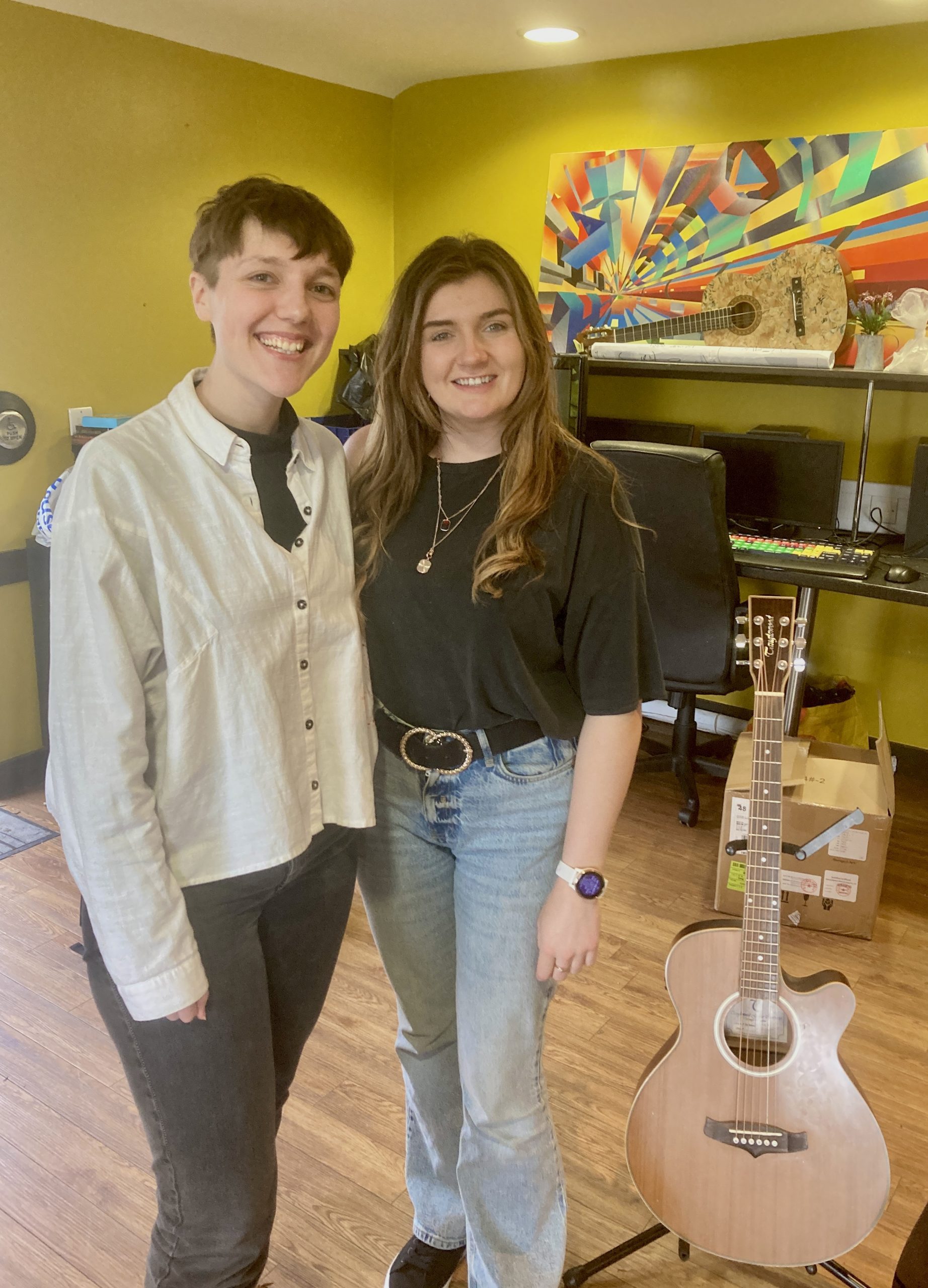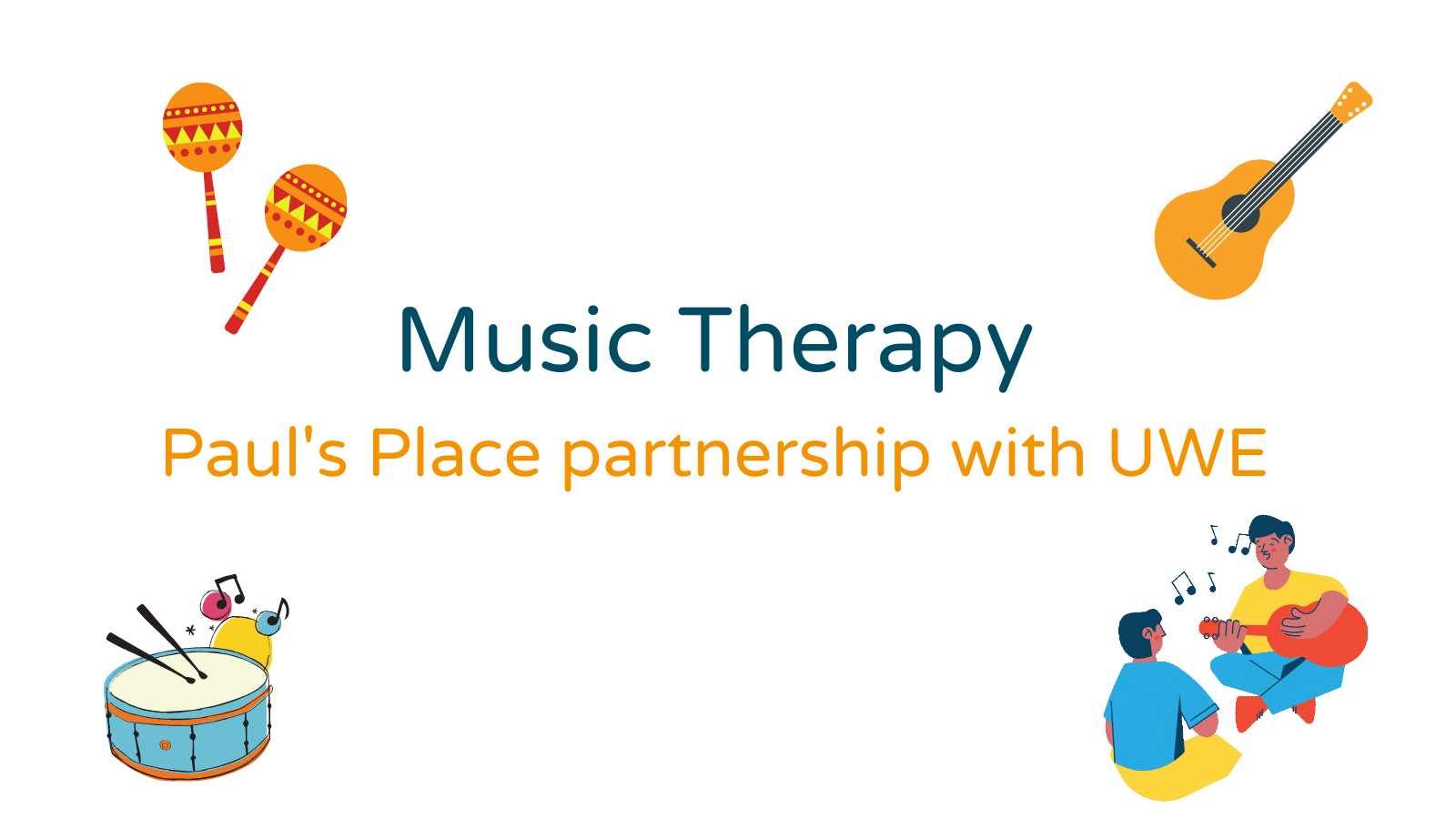Thanking Beth and Bethany for their music therapy sessions

Starting from the beginning, we first ask Beth and Bethany to introduce the practice to us by explaining its origins.
“Music has been used throughout history as a tool for rituals and healing. That’s sort of where the idea first came from, however, as a therapeutic practise – that started during the world wars. Soldiers recovering would listen to music to relax and help them cope with PTSD.”
Starting as music to listen to, music therapy now involves the patient being a musician themselves.
“It wasn’t until the 60s that it become more established as the practice it is today. Now it involves more interaction with people during sessions and communicating through music to allow them to express themselves, and gain more independence and confidence within themselves.”
“It’s a tool to reflect on things going on in their lives.”
“Music can access every part of the brain. So even if half of your brain is inactive, you can still re-access parts of that through music. For example, studies have shown someone who has lost the ability to talk due to dementia, has been able to sing still.”
“This is what springboarded the connection to music and coupling that with counselling or other therapeutic techniques.”
Beth and Bethany are part of our partnership with UWE’s Music Therapy Masters Course and have been at Paul’s Place on placement.
In the practical sense, there are various techniques that music therapy uses.
“It’s quite broad in terms of what you can do with it. The main thing that we use is free improvisation, which is allowing people to play what they want that reflects their feelings. Free improvisation allows the participant to show us what is going on inside them. They can express a range of emotions. E.g. to express anger you can hit a drum.”
“This technique can build relationships as well, as you can be quite playful at the beginning. It’s especially helpful for people who are non-verbal or those who want to become more verbal – something like singing is a great tool to bridge that gap. Music therapy sessions can involve talking to the therapist or just listening to music throughout the entire session.”
How have they adapted their techniques for physical disability?
“We had to really think about the instruments depending on how much mobility an individual has. For example, if you only have use of one hand, bring in an extra table to place the instrument rather than the individual holding it.”
“Generally, people with a physical disability experience more social isolation than others. We focus on developing social interaction within group sessions. We work in line with the group dynamic while also thinking about the individuals in the group to ensure they are engaging as much as they can.”
Due to confidentiality, we asked about general breakthroughs of past clients, rather than share examples from those at Paul’s Place. These are from their previous placements or studies.
“I worked with a girl who had severe verbal communication difficulties. She could communicate by using Makaton sign language instead. We used music as a tool for her to build her confidence and her relationships. After a period of weeks, she began to use her voice more. This then filters out of the music therapy room into her school and home life.”
“Case studies have shown that people with mental health issues (who don’t quite know why things are happening) come to music therapy to access certain emotions that they’ve never experienced through an instrument. Sometimes, emotions that they experienced before but completely blocked out of their memory come back. These are the suppressed memories that come out through music.”
“The good thing about music therapy is that playing the instruments means that when you do go into those past memories, you have a physical object to ground yourself. To bring you back into the present moment.”
How do you think this will help people at Paul’s Place?
“This therapy gives individuals to feel included, it can help build people’s confidence and empower them to become more independent. We’re also helping people to think about disability, outside of the room, outside of Paul’s Place disability means something else and it comes with many challenges. Whereas the inclusivity during sessions is wonderful.”
There is complete acceptance of the fact that who you are, is who you are meant to be.
How would you sum up music therapy?
“It’s great. Full Stop. There should be more of it!”

